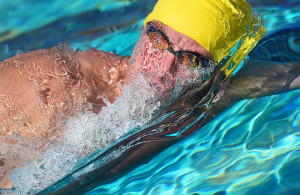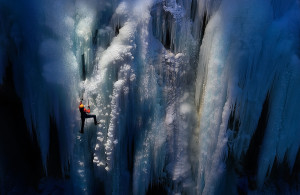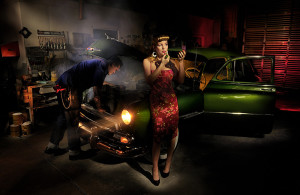Workshop at the Ranch – March 2014 – Your Questions & My Answers
 Hi and welcome to this edition of Workshop at the Ranch (WATR.) Your Questions and My Answers continues. Let’s see what the contact email bag offered this month.
Hi and welcome to this edition of Workshop at the Ranch (WATR.) Your Questions and My Answers continues. Let’s see what the contact email bag offered this month.
|
Image #1 NEW Nikon D4s camera … Nikon D4s, ISO250, 1/4000 at f5.6, Nikon 400mm f2.8 lens, WB Auto 1, SanDisk 64G Extreme Pro Flash Card.
A… Hey Bruce. Yes, I have heard all about the NEW Nikon D4s. In fact, I have been involved in the promotional image making campaign for this latest Flagship camera from Nikon during the month of February. As of this writing the D4s announcement is only 2 minutes old, but Nikon Japan has given me permission to release one example image that I made with the New D4s camera. NOTE: this image is only 72dpi as is the standard size for my website. The NEW Nikon D4s camera is fantastic! It is truly a significant upgrade well above its predecessor the D4. The D4s upgrade from the D4 far and away exceeds what we all thought was possible. From the very first picture I made with it I knew this camera was something very special. There is already plenty of D4s information (some fact, some rumor) and tons of hype out on the Internet. With my personal experience shooting a variety of sports with the NEW Nikon D4s here are 3 reasons why I believe the NEW Nikon D4s trumps the D4 in a huge way and should be placed at the top of every sports photographer’s camera list. 1. Group Area AF: The new Group Area AF is a welcome feature to anyone who shoots sports action. With 5 AF Sensors used as a Group this NEW auto focus feature makes it much easier to lock onto your moving subject and way more accurate even if your action subject is moving erratically. 2. Accelerated AF Speed: This major improvement helps every genre, but especially caters to the sports photographer. With a dramatic increase in tracking speed and accuracy, sharp focused pictures of a football player breaking through a crowded line of scrimmage, or a focused sequence of 11 fps of a Superbike coming straight at you at 90mph has become a reality. 3. Higher ISO and Greatly Improved Noise Reduction: The ISO Sensitivity Range now reaches 25600, and looks extremely clean even in the shadows. This will be extremely helpful with indoor sports and low light arenas and stadiums. And for those who shoot nighttime Jr. High School Football on a field with no lights at all the NEW D4s has a Hi4 ceiling of ISO409,600. Next month’s WATR article will feature more of my D4s images and more of my experience shooting with the NEW Nikon D4s camera. Thanks Bruce for asking. Adios. Dave |
|
A… Hi Doug. Long time buddy. Yes, I will be on the faculty at the Sports Photography Workshop this July 23-28, 2014 in Colorado Springs. Hope you are able to attend the workshop. www.sportsphotographyworkshop.com or “click” the Sports Photography Workshop logo at the left side of my website pages for a short video on the workshop. Now to your question: Gymnastics was my first sport to document as a professional photographer. I love the sport and I love the kinds of pictures that can be made of gymnasts no matter what age group or level they are competing in. The best equipment choice will be the fastest lenses you have combined with how close can you get to the apparatus and athletes. Hopefully you can get close enough to use the 85mm 1.4. It will allow you to shoot with the fastest shutter speed and reasonable ISO. If not, your 70-200mm f2.8 lens is standard and will do nicely. Try to keep at 1/1000 if possible. It is best to position yourself close enough to the apparatus so that your athlete is occupying the entire frame when they are fully extended. This way you don’t need to crop the image too much in post work. Gymnastics routines can be very unpredictable to someone who is new to the sport. Sometimes it is easier to pre-focus on the apparatus or the gymnasts hands or feet on the bar or beam, then take you thumb off the AF back button so as to lock the focus perfectly on the center of that area. This creates an area that is in focus no matter what trick is performed in that area. This was the case with Fan Yi of China at the World Championships. I simply pre-focused on her hands during a previous skill, then I took my thumb off the AF back button which locked the focus. When she released the bar and began her flip I shot this picture. She is in perfect focus because the plain of focus hasn’t changed from where her hands were. It’s an old technique that still works today. Make sure your camera is set for Continuos AF and set at the Highest frames per seconds possible. White Balance can be tricky with indoor High School gymnasiums. I recommend Auto WB as you will most likely encounter a variety of old and new Mercury Vapor lights that vary in color temperature output. Auto WB will help keep skin tones somewhat consistent. Shoot Manual exposure, not Aperture Priority, Shutter priority, or Auto ISO. When shooting indoor sports a Manual exposure setting is usually the best as the gymnasium lights are illuminating the athletes while the audience areas are usually darker. Get to the event early so you can practice making pictures during the warm up session. This will be the best time to choose your shooting locations for each event and become familiar with the athlete’s routines as well. Good luck my friend…hope to see you at the Sports Photography Workshop this July. Dave |
 Image #3 Stairway to Heaven … Nikon D200, ISO100, 13 seconds at f8, Nikon 17-55mm lens, WB 3000K, Brinkmann Max Million II Spotlight, Pocket Wizard Multi MAX Transceivers to trigger the camera Remotely from my location above the Ice Gorge in Ouray, Colorado. Image #3 Stairway to Heaven … Nikon D200, ISO100, 13 seconds at f8, Nikon 17-55mm lens, WB 3000K, Brinkmann Max Million II Spotlight, Pocket Wizard Multi MAX Transceivers to trigger the camera Remotely from my location above the Ice Gorge in Ouray, Colorado.Q… I’m very impressed with your Lightpainting skills. I will be teaching a Conceptual Photography class at my University and would like to show some of your work with your permission. Take care and keep up the great work. A… Hi Bland. Glad you enjoy my Lightpaintings. “Click” the PR Pack in my Biography page and you can down load some portfolio images that I provide…one is a Lightpainting. You are certainly welcome to refer your students to my website and in particular a series of 8 Lightpainting instructional articles (with example Lightpaintings) that I have written on my Workshop at the Ranch page beginning with February 2011. This 8 part series takes you through the basics of Lightpainting and continues to teach Lightpainting the Model and finishes with Lightpainting Large Scale Landscapes. There are lots of example images with all camera data and particulars as to how I Lightpainted them. Workshop at the Ranch – february 2011 Lightpainting part 1 – The Basics This Lightpainting called Stairway to Heaven is one of my favorites and is available to anyone. Go to my Biography page in my website and “click” PR Pack and download the 3 portfolio images, including Stairway to Heaven. Adios. Dave
|
 Image #4 Body Shop … Nikon D3s, ISO400, 1 minute at f8, Nikon 24-70mm lens, WB 10,000K, Gitzo Carbon Fiber Tripod with Ball Head and Kirk “L” Bracket, Bolt 2L flashlight, SanDisk 32G Flash Card. Image #4 Body Shop … Nikon D3s, ISO400, 1 minute at f8, Nikon 24-70mm lens, WB 10,000K, Gitzo Carbon Fiber Tripod with Ball Head and Kirk “L” Bracket, Bolt 2L flashlight, SanDisk 32G Flash Card.Q … Dave, I am looking over the pre-workshops for Photoshop World in Atlanta this April 6-10, 2014 and see you are teaching one about light painting. I may be interested in attending. What types (subjects) will be photographed during the workshop? Thanks…Ray A… Hi Ray. My pre-con workshop Lightpainting class will be at Old Car City. I’ve not yet been to Old Car City but believe it will be a fantastic place to Lightpaint according to my good friend Bill Fortney. If you’re interested in signing up simply check out the 2014 Photoshop World website and “click” Workshops…then scroll down to “Lightpainting the Town” http://photoshopworld.com/optional-pre-conference-workshops/ This image is not from Old Car City and we will not have any models for our class, but it might give you an idea of what is possible with old cars and some Lightpainting. Hope to see you there. Dave |
 Image #5 Arena Lighting Strobe Systems … Elinchrom Sport Strobes, Pocket Wizard Multi MAX Transceivers, Manfrotto Super Clamps, Rosco Gels and all the accessories to light 3 sports arenas in one day. An complex task made possible and affordable thanks to the team at Robert’s Camera. Image #5 Arena Lighting Strobe Systems … Elinchrom Sport Strobes, Pocket Wizard Multi MAX Transceivers, Manfrotto Super Clamps, Rosco Gels and all the accessories to light 3 sports arenas in one day. An complex task made possible and affordable thanks to the team at Robert’s Camera.Q… Hi Dave, I learned a lot from your web-site. I saw that you get your gear at Robert’s Camera in Indy. Do you live in Indy? Do you do any workshops in Indiana. Best, Tom A… Hi Tom. Thanks for your question. I actually live in Colorado, not far from the Wyoming boarder. But, for the past 30 plus years I have bought all my cameras, lenses, and nearly every accessory I own from Robert’s Camera in Indianapolis, Indiana. Robert’s has everything I need and to order gear from them started for me way back in the early 1980’s. Seemed like everyone who worked for Sports Illustrated bought his gear from Robert’s. So I did to when I started doing work for SI. One of the great advantages and pleasures of buying from Robert’s is working with Jody Grober and his sales team. They are all great photographers in their own right and I like to get their opinion, feedback and advise before I make a purchase. Other camera stores just ask you what you want and don’t seem to be able to take the time to explain a few things. This can make it difficult to make the best decision regarding the purchase of a new camera, lens, flash system, etc. Not sure where you buy your gear now Tom but here is the Robert’s website and phone number. Tell Jody I said Hi…and that I’ll see him at the Sports Photography Workshop in Colorado Springs in July 23-28, 2014. Roberts website: www.robertscamera.com phone: 800-726-5544 I don’t have an image of Robert’s Camera store in downtown Indy, but here is a shot of my arena lighting gear bought at Robert’s Camera. Adios. Dave |
Well, that about wraps up this months Q&A. Hope you enjoyed and learned something new.
I have a lot of Workshops scheduled this year. To find out where and when I will be teaching check out my Upcoming Workshops page and maybe I’ll see you at Photoshop World in April, the Sports Photography Workshop in July or maybe a Mentor Series TREK in Mono Lake this Summer.
One thing is for sure, I’ll see you all here on Workshop at the Ranch next month.
Adios. Dave



